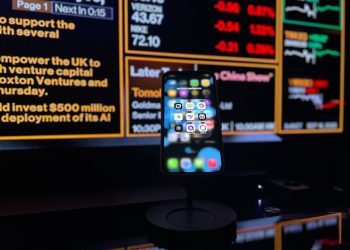No products in the cart.
How AI is Transforming General Motors’ Supply Chain Resilience
AI is reshaping how General Motors manages its supply chain, enhancing resilience against disruptions like hurricanes and material shortages.
In an age where uncertainty often reigns, General Motors (GM) stands at the forefront of innovation, harnessing artificial intelligence (AI) to transform supply chain management. As the world faces increasingly volatile disruptions—be it hurricanes sweeping through manufacturing hubs or sudden material shortages—GM is leveraging technology to not just survive, but thrive.
Imagine a bustling factory floor, robots whirring, and humans orchestrating a symphony of production. Now, overlay that scene with a digital brain—AI—analyzing data streams in real-time, predicting interruptions before they occur. This is not the realm of science fiction; it’s GM’s reality.

GM’s approach is not merely about addressing challenges as they arise. It’s about anticipating them. With AI’s predictive analytics, the company can foresee potential supply chain disruptions, allowing for preemptive adjustments. This foresight can mean the difference between a smooth production run and a costly halt.
In 2023, GM faced significant challenges when a hurricane threatened to disrupt its supply lines in the Gulf Coast region. While many companies scrambled to react, GM’s AI system had already flagged potential risks and rerouted supplies to secure operations. This proactive strategy not only minimized losses but also reinforced trust with dealers and customers.
At its core, GM utilizes machine learning algorithms that sift through vast datasets—from weather patterns to supplier performance metrics.
But how does this AI integration actually work? At its core, GM utilizes machine learning algorithms that sift through vast datasets—from weather patterns to supplier performance metrics. This data-driven approach enables the company to build a resilient supply chain capable of weathering both natural calamities and market fluctuations.
Moreover, GM isn’t alone in this journey. The automotive industry is witnessing a seismic shift, as competitors like Ford and Tesla also explore AI solutions. The stakes are high; in today’s market, efficiency isn’t just an advantage—it’s a necessity.
Yet, the reliance on technology brings its own set of challenges. As AI systems become more intricate, the risk of over-dependence looms large. Experts warn that while AI can optimize operations, it may also create vulnerabilities if not managed correctly. For instance, a single algorithmic error could cascade into significant disruptions, reminding us that human oversight remains critical.
Interestingly, GM’s strategy extends beyond just operational efficiency. The company is also keenly aware of the environmental impact of its supply chain. With AI’s ability to analyze carbon footprints, GM is working towards a more sustainable model, balancing profit with planet—a crucial consideration for a generation increasingly concerned about climate change.
As we look to the future, the implications of GM’s AI-driven supply chain strategy resonate beyond the automotive industry. Businesses across sectors can glean insights into how technology can enhance resilience and adaptability. Startups and established companies alike are encouraged to explore AI tools that not only streamline operations but also foster innovation.
With AI’s ability to analyze carbon footprints, GM is working towards a more sustainable model, balancing profit with planet—a crucial consideration for a generation increasingly concerned about climate change.
For young professionals and aspiring entrepreneurs, this trend presents a wealth of opportunities. The fusion of AI with supply chain management is creating demand for skilled workers who can navigate this evolving landscape. Understanding AI’s role in business operations may soon become as fundamental as mastering Microsoft Excel was in the past.
In the end, General Motors’ journey into the realm of AI is emblematic of a larger narrative—one where technology serves as both a shield and a sword. As businesses continue to grapple with challenges in the global marketplace, those who embrace innovation will not only survive but thrive in the face of adversity.











